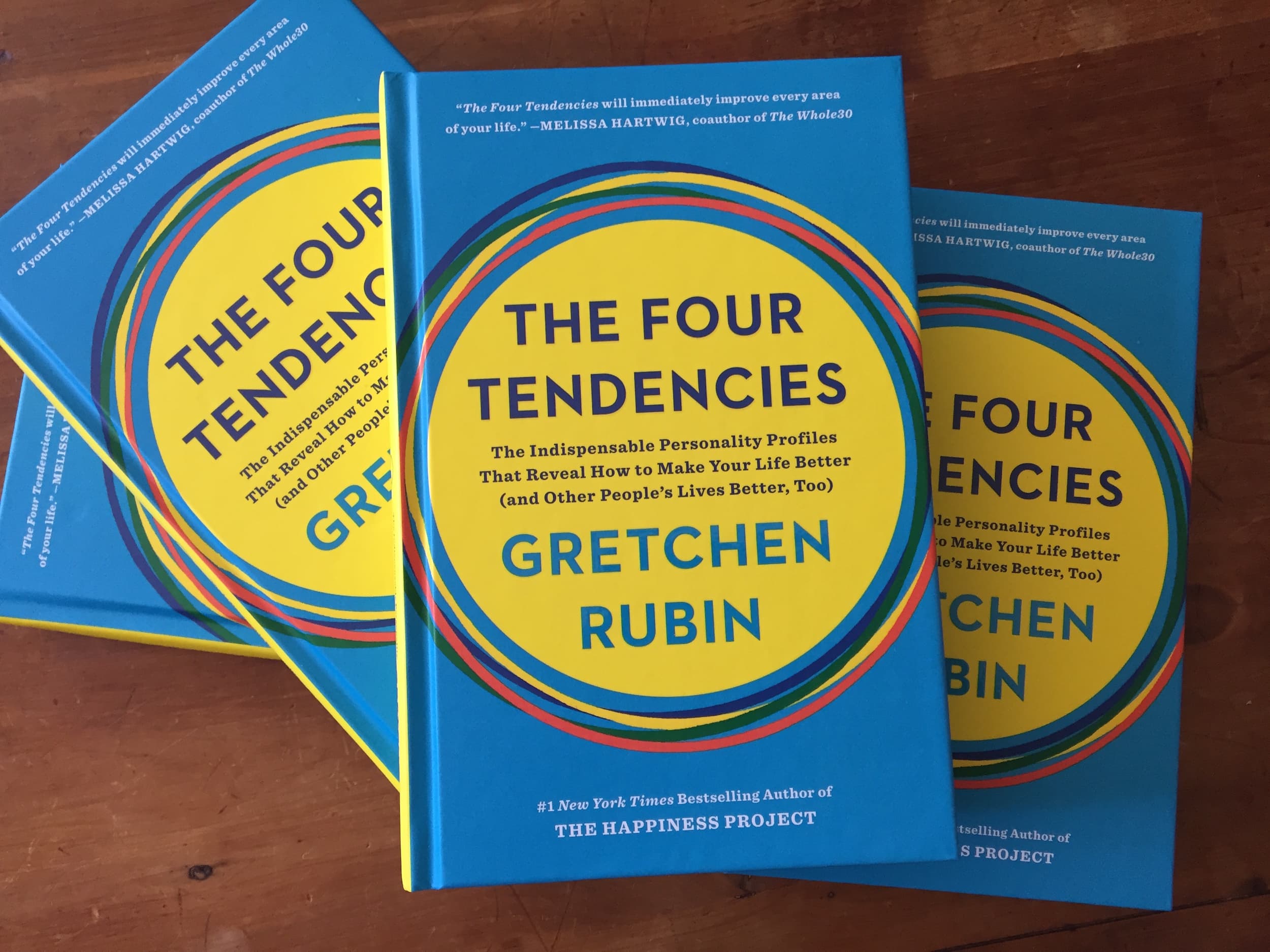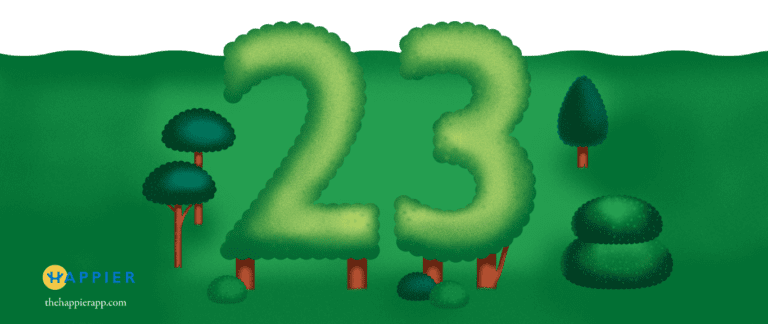Wow, it’s hard to believe that my book The Four Tendencies came out five years ago. As is so often the case with milestones, it feels like it just happened last year, and also that it happened long ago.
I remember when I got my first clue into the existence of the Four Tendencies. I was at lunch with someone I didn’t know well. At that time, I was deep into the research for Better Than Before, my book about habit change, so I was quizzing everyone about their habits.
She told me, “The weird thing is that in high school, I was on the track team, and I never missed track practice, but I can’t go running now. Why?”
I had no idea at the time that her simple question would end up changing the entire course of my intellectual life.
I couldn’t stop thinking about what she’d said, and how it fit with other things people had told me—like “I never make New Year’s resolutions, because January 1 is an arbitrary date” or “Sometimes I won’t do something that I want do do, because someone told me to do it“—until I figured out the Four Tendencies framework.
I’ll never forget my feeling of euphoria when I had my huge conceptual breakthrough and was able to envision the four interlocking circles. (The actual names of the Four Tendencies came much later.)

In my book Better Than Before, I outlined the 21 strategies we can use to make or break our habits, and using the Four Tendencies framework became strategy #1.
After Better Than Before hit the shelves, I did a lot of speaking about habits, and I noticed something that surprised me. I’d talk about many fascinating aspects of habits—the Four Tendencies, abstainers vs. moderators, the power of pairing, why and how people influence each other’s habits, and so on—but almost all the questions were about the Four Tendencies. People really wanted to know more about the Tendencies.
I kept answering questions, and responding to emails, and creating PDF resources, until finally I realized, “Hey, maybe I should write an entire book about the Four Tendencies.”
This idea came as a huge relief, because I’d become increasingly filled with regret that I’d learned so much more about the Tendencies after the publication of Better Than Before. If I wrote a book, I could develop those ideas thoroughly.
For instance…
- I understood better why, for Upholders like me, the advice to “Give yourself a break” can lead to more anxiety, not less.
- I noticed that Questioners often don’t like to answer questions. Ironic, but true.
- I learned a lot more about the important (and puzzling, if you don’t know about it) phenomenon of Obliger-rebellion.
- I heard about many imaginative, ingenious ways to create outer accountability.
- I learned more strategies for ways Rebels can stick to their aims for themselves. (Rebels have to do this in a specifically Rebel way, and that’s different from the other Tendencies.)
- I heard countless stories from people about how they’ve used the Four Tendencies at work, in romance, in healthcare, with kids, and more.
Even to this day, I keep learning more about the Tendencies. I have a giant document where I add anything relevant to the framework: great examples of how to harness your Tendency, examples of famous people and their Tendencies (or fictional characters, for instance from Game of Thrones and Mad Men), great stories.
Over the last five years, it has been gratifying to see how many people have taken the free, quick Four Tendencies quiz. More than 3.2 million people have taken this quiz! It has gone through several iterations, and was refreshed just a few weeks ago.
Note: The quiz is great for telling you about yourself, but many people find the Four Tendencies more useful for understanding other people. In that case, it’s helpful to read the book The Four Tendencies.
Every year, I keep creating more resources. For instance—and this is huge undertaking—I launched the award-winning Happier™ app. It offers several tools to help you keep your habits, as well as know-yourself-better questions, tips and hacks, everyone’s favorite, “Spin the Wheel,” and more.
The app uses the Four Tendencies to suggest the tool that’s likely to work for you. When you sign up, you take the quiz to learn whether you’re an Obliger, Questioner, Upholder, or Rebel (or, if you already know it, you can select it). Then, when you set up a new aim, the app suggests a tool that’s likely to be useful based on your Tendency. For instance, “Obligers” excel at meeting their promises to other people, but they struggle to meet their promises to themselves. To meet their aims, they need outer accountability, so Happier suggests using the “Accountability Partners” tool. By contrast, an Upholder would get the suggestion to use “Don’t Break the Chain.”
To celebrate the fifth anniversary, I’ve created the Four Tendencies “Gift Boxes” in the Happiness Project Shop. A box includes:
- a new Four Tendencies Companion Guide, exclusive to these Gift Boxes, which includes revealing interviews with people of each Tendency, as well as reflection questions and space to write
- a Tendency mug and sticker—display your Tendency with pride!
- a Tackle Box—a set of five sticky pads with different approaches to tackle your day, with pads designed with the Four Tendencies specifically in mind (if you’re curious about the logic, read here)
This box is great way to explore your own Tendency more deeply, or to share the Tendencies with someone else.
I’ve heard about teams and entire companies that do Four Tendencies exercises together—I’ve even heard from families spent their Thanksgiving dinners discussing their Tendencies!
To give a very small, recent example of how I’ve used the Four Tendencies framework, myself: The other night, my husband and I had a great time when an old friend invited us over for dinner. I don’t know that person’s email address, so, a few minutes ago, I texted my husband: “What’s XYZ’s email address?” I hit “Send,” then remembered to send another message: “I’m going to write a thank-you note.”
As I know, Jamie is a Questioner, and he’ll bother to send me that information only if he understands why I’m asking. By understanding that aspect of his nature, I’ve avoided a little moment of frustration.
What are some examples of how you’ve used the Tendencies to understand other people better? Or to understand yourself better? I remain fascinated by hearing people’s experiences.




